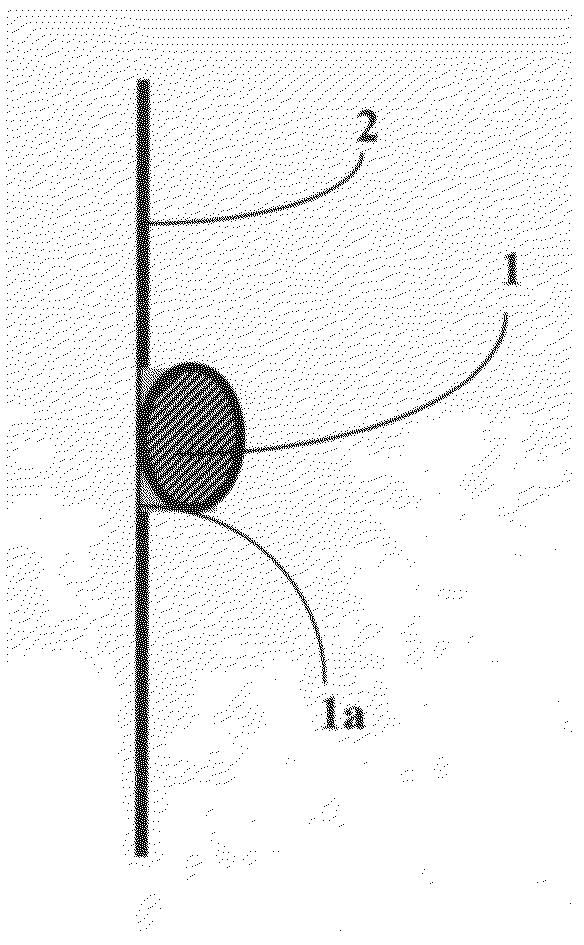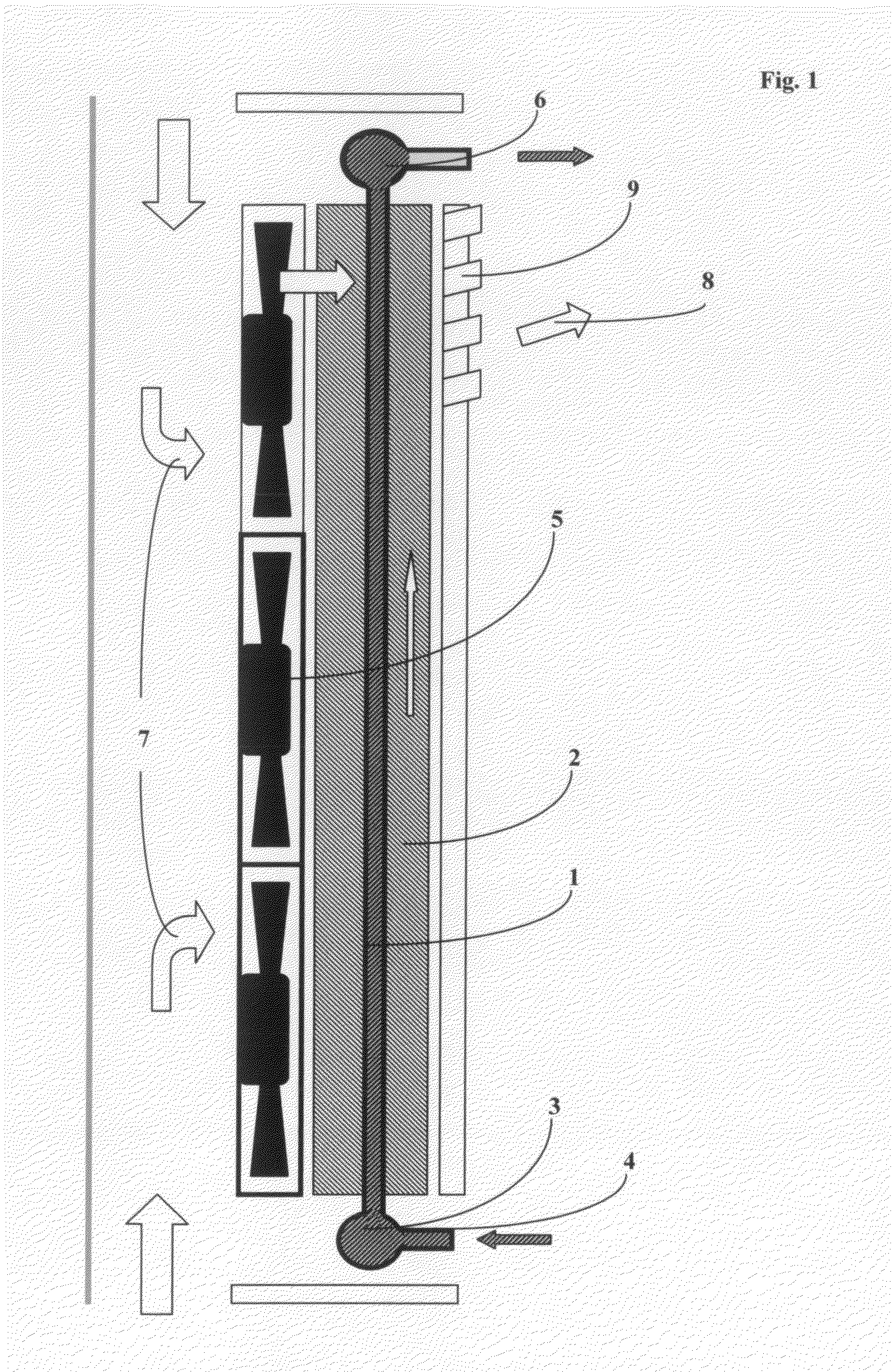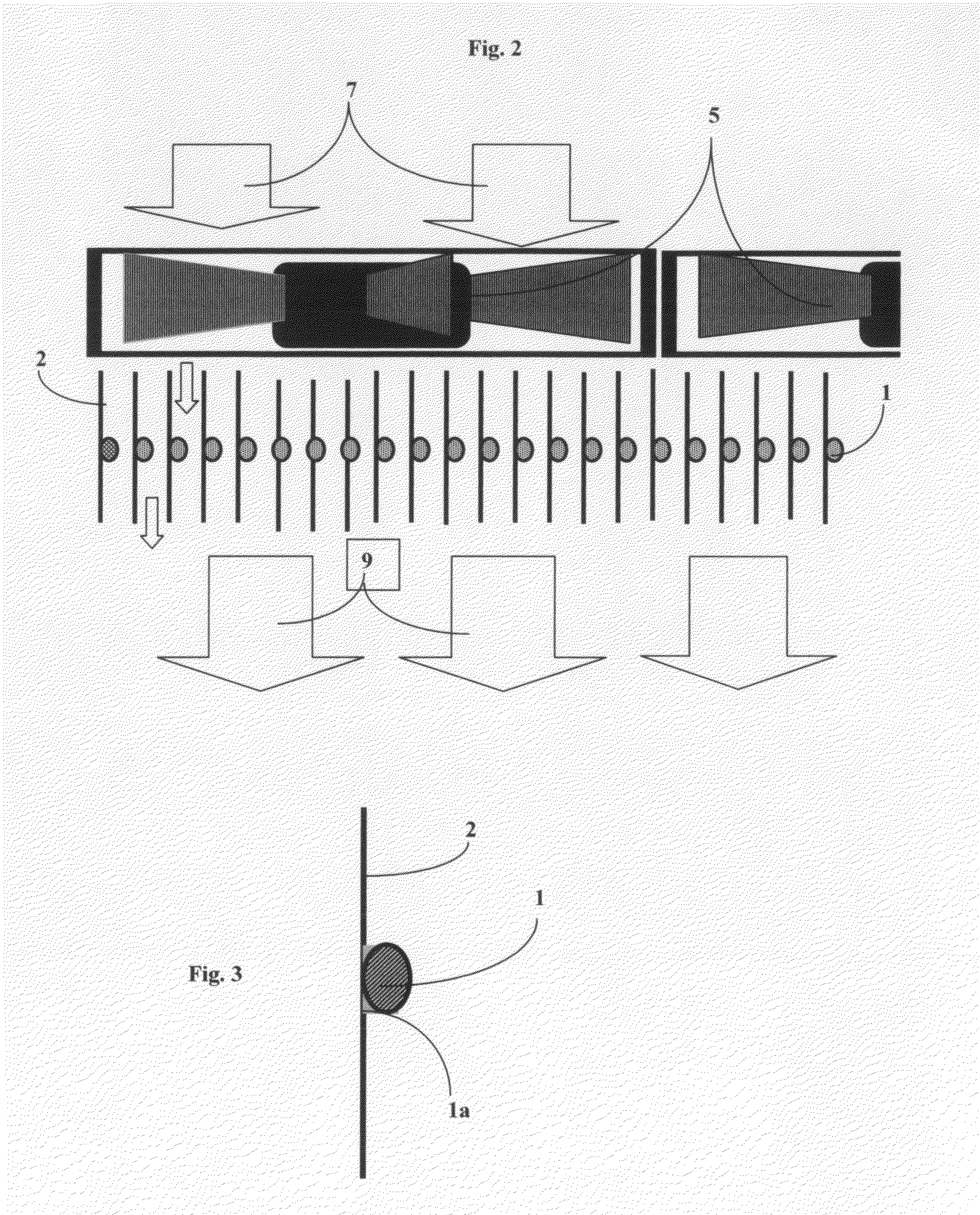Multi tube-fins liquid-air heat exchanger and methods
a heat exchanger and liquid air technology, applied in indirect heat exchangers, lighting and heating apparatuses, heating types, etc., can solve the problems of high installation labor cost, large air duct volume, and ineffective heat transfer efficiency improvement, so as to prevent heat leakage, save system energy, and waste over 20% of energy
- Summary
- Abstract
- Description
- Claims
- Application Information
AI Technical Summary
Benefits of technology
Problems solved by technology
Method used
Image
Examples
Embodiment Construction
[0067]Reference will now be made in detail to the preferred embodiments of the invention, examples of which are illustrated in the accompanying drawings. While the invention will be described in conjunction with the preferred embodiments, it will be understood that they are not intended to limit the invention to those embodiments. On the contrary, the invention is intended to cover alternatives, modifications and equivalents, which may be included within the spirit and scope of the invention as defined by the appended claims.
[0068]As described above, the present invention provides an apparatus and methods for fluid and heat exchange in the application of air conditioning of rooms and spaces in structures or dwellings. More particularly, the apparatus distributes small amount of conditioned (hot or cold) fluid into large number of small tubes each attached lengthwise with thin metal fins and oriented in the same direction FIG. 1, FIG. 2, FIG. 3 and FIG. 4; 1, 2 (47 tubes in a square ...
PUM
 Login to View More
Login to View More Abstract
Description
Claims
Application Information
 Login to View More
Login to View More - R&D
- Intellectual Property
- Life Sciences
- Materials
- Tech Scout
- Unparalleled Data Quality
- Higher Quality Content
- 60% Fewer Hallucinations
Browse by: Latest US Patents, China's latest patents, Technical Efficacy Thesaurus, Application Domain, Technology Topic, Popular Technical Reports.
© 2025 PatSnap. All rights reserved.Legal|Privacy policy|Modern Slavery Act Transparency Statement|Sitemap|About US| Contact US: help@patsnap.com



